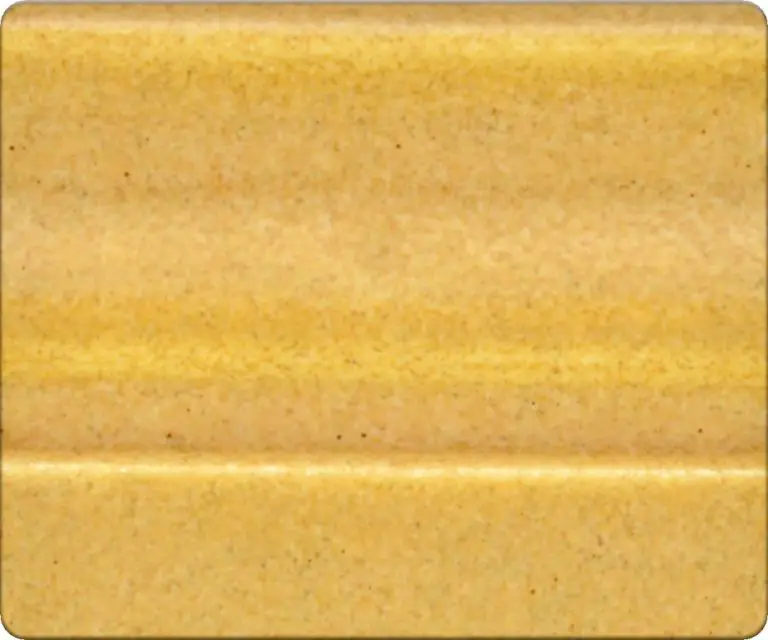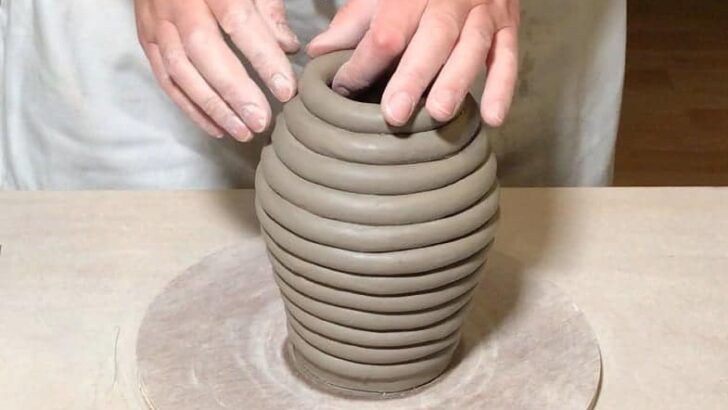What Is The Clay Seal Method?
Clay seals are small objects made out of clay that were used throughout ancient history to secure and authenticate documents, goods, and other items. They functioned similarly to the wax seals that would be used on letters centuries later.
Clay seals date back over 5,000 years to ancient Mesopotamian civilizations like the Sumerians and Babylonians. They would press cylinder seals into wet clay to leave an impression as a form of signature. The practice then spread to other early complex societies, including ancient Egypt, the Indus Valley, and China.
For archaeologists, clay seals provide a unique window into bureaucratic, economic, and social systems of past civilizations. The impressions left on them inform what types of documents or goods they accompanied and the titles of officials involved. Their widespread use shows the importance of tracking goods and keeping records in complex societies.
Making Clay Seals
The process of making clay seals generally involved selecting the right type of clay, preparing it properly, designing the seal, and then imprinting it by carving or stamping.
The clay used had to be fine and plastic enough to take impressions. Sources typically included Nile silt clays in ancient Egypt and alluvial clays in Mesopotamia. The clay would be purified, soaked in water, and kneaded to remove impurities and achieve optimal plasticity.
The design was often created by incising or engraving the negative image into a stamp, cylinder, or ring. Intricate designs and inscriptions could be carved by hand or built up with multiple stamp impressions. The stamps themselves might depict figures, symbols, scenes, or writing.
Finally, the moist clay would be pressed onto the stamp or the stamp pushed into the clay to leave the impression. The seals were then dried or lightly fired to harden the clay. The result was a portable yet secure means of encoding information and controlling access.
Using Clay Seals
Clay seals served several important functions in ancient societies. One of the main uses was to seal documents such as scrolls, letters, and decrees. A lump of clay would be affixed to the document and then imprinted with a seal. This served to authenticate the document, prove it came from the claimed sender, and prevent tampering. Breaking the clay seal would reveal any unauthorized unrolling of the scroll or opening of the document.
Clay seals were also commonly used to secure containers and storage rooms. Pots, baskets, sacks, doors, and chests would have a clay seal attached to them, with an imprint distinctive to the owner. If the container was opened or entered, the seal would be broken, indicating a breach. This allowed ancient peoples to ensure the safety and confidentiality of their valuables and sensitive materials.
In addition to documents and containers, clay seals were used to mark ownership of property. They would be imprinted with a person’s name, title, or insignia and affixed to goods, animals, slaves, land deeds, and other possessions. The presence of the seal marked something or someone as being owned. Clay seal impressions have been found marking everything from vases to cattle.
Through these functional uses in daily life, clay seals took on great significance as markers of identity, authority, security, and authenticity in ancient civilizations. Their discovery has provided modern scholars with invaluable insights into the cultures that created and used them.
Deciphering Clay Seals
Deciphering the impressions on ancient clay seals has provided invaluable insights for archaeologists seeking to understand past civilizations. The seals often contain written texts, images, symbols, and fingerprints that reveal information about the society that produced them.
Reading the impressions requires carefully examining the reversed or mirrored shapes stamped into the clay. Letters and words may be written in languages like Sumerian, Akkadian, Elamite or Aramaic. The texts reveal the names of kings, gods, and individuals who owned or used the seals.
Interpreting the images and symbols also provides clues into the culture, religion, and identity of the seal owners. Common motifs include mythical creatures, deities, temples, battle scenes, and natural elements. The shape and details of the seal design reflect the time period, kingdom, status, and profession.
In addition to the stamped impressions, the seals may retain fingerprint marks and traces of materials sealed, like cloth or papyrus. All of these elements allow archaeologists to reconstruct information about trade, bureaucracy, art, and daily life in ancient civilizations.
Notable Clay Seal Discoveries
Some of the most significant clay seal discoveries have provided archaeologists with valuable insights into ancient civilizations.
In the Indus Valley, thousands of miniature clay seals with animal motifs and undeciphered symbols have been unearthed. These seals likely served both functional and religious purposes for the Indus Valley civilization from around 3000-1500 BCE.
Cylinder seals were prevalent in ancient Mesopotamia dating back to around 3500 BCE. These cylindrical seals could be rolled onto wet clay to leave an impression. Mesopotamian seals often depicted religious, mythological, or historical scenes. The seals provide information about Mesopotamian art, culture, andwriting.
In Egyptian tombs, archaeologists have discovered clay seal impressions called bullae. These were used to secure documents, goods, and doors. The seals on tombs acted as security, while also providing information about Egyptian gods, symbols, and burial practices.
Clay Seal Materials
Clay seals were made from various types of clay depending on the region and time period. Common clay types used include earthenware clays like red clay or buff clay. These clays contain impurities like iron oxide that give the raw clay its red or buff color. When fired at lower temperatures (~1000°C), earthenware clays maintain their natural color.
Kaolin clay was also used, which is a white clay free of iron impurities. It remains white when fired. Some clays were tempered with additives like straw to prevent cracking and control shrinkage. A clay slip was often applied before firing to create a smooth sealing surface.
Firing temperatures varied, but were generally kept low, in the earthenware range of 600-1200°C. Higher firing temperatures were avoided to prevent vitrification of the clay that would cause it to become glassy, non-absorbent, and unable to take applied seals.
Clay Seal Shapes
Clay seals came in a variety of shapes depending on their function and time period. Some of the most common shapes include:
Cylinders
Cylinder seals were one of the earliest forms of clay seals, used in ancient Mesopotamia starting around 3500 BCE. They were small cylinders made of stone or clay that could be rolled across wet clay to leave an impression. These were often used to mark property or authorship.
Tablets
Clay tablet seals were flat rectangles or squares with engraved designs, common during the mid-3rd millennium BCE in Mesopotamia. A tablet seal could be pressed into wet clay to leave an identifiable mark.
Animal Shapes
Animal-shaped seals were popular as amulets and talismans in ancient Egypt, China, and the Indus Valley. These were molded into the form of animals like cows, monkeys, frogs, or mythical creatures.
Geometric Shapes
Simple geometric shapes like discs, spheres, cones, tetrahedrons, etc. were used for clay seals in many ancient cultures. They were easy to produce and left distinctive impressions.
Clay Seal Design Elements
One of the most fascinating aspects of ancient clay seals is the intricate designs and images imprinted on them. Clay seal designs provided a canvas for ancient artisans and scribes to express information and creativity.
Images and Symbols: Clay seals often featured pictorial images and symbolic designs. Common symbolic images included animals, plants, gods/goddesses, astrological signs, and geometric shapes. These symbols conveyed meaning and identity. For example, seals belonging to merchants might bear symbols of their trade.
Writing: In literate societies, clay seals were often impressed with writing, such as names, titles, or short inscriptions. The earliest writing on clay seals dates back to 3500 BCE Mesopotamia. Writing provided information about who the seal belonged to or what its purpose was. Seal inscriptions are a valuable source of information about language and society.
Patterns: Decorative patterns and borders were commonly added to clay seals. Repetitive geometric patterns, vegetal designs, and stylized borders ornamented the main design. Borders helped frame and separate the central image or inscription.
The combination of images, symbols, writing, and patterns on clay seals provides insights into the identities, styles, and beliefs of ancient cultures. Seals were personalized to their owners and meticulously designed using the artistic conventions of the time.
Clay Seals Today
In modern times, clay seals have transitioned from purely functional objects used for securing goods to more decorative and artistic creations. Many artisans today handcraft clay seals and stamp seals as a unique art form. These are often used to adorn jewelry, ceramics, or sold as small decorative objects.
Some artists make custom stamped seals for clients by handcarving intricate designs into stamps that can be pressed into clay. These carry on the ancient tradition of artful clay seals marking identity and ownership. The art of making personalized clay seals and stamps has seen a revival among crafters and artists drawn to their creative potential.
While no longer essential for document security and goods protection as in ancient times, clay seals continue to be appreciated for their artistic value. Their small size makes them an ideal medium for creating mini artworks. The level of detail and ornamentation possible on a tiny piece of clay is part of their enduring appeal.
Importance to Archaeologists
Clay seals are important to archaeologists because they provide valuable insights into ancient cultures and civilizations. When intact seals are discovered, the impressions and markings on them can reveal significant information about the society they came from.
One of the main things clay seals allow archaeologists to learn is what kind of writing system and language a culture used. The symbols and characters imprinted on seals indicate what script was used and allow linguists to study and attempt to decipher ancient languages. This can shed light on how communication occurred in the society.
Seals also provide clues about administrative and bureaucratic practices in ancient civilizations. The use of seals for authorized marking of documents and goods can highlight the presence of developed procedures for tracking transactions and commodities. The wide distribution of certain seal types or seal authority marks the presence of organizational systems and governance.
Images and motifs on seals give insights into artistic styles and religious beliefs. Recurring symbolic patterns and deity representations allow archaeologists to identify what gods and goddesses were important. Scenes depicting daily life or special events reveal details about occupations, rituals, social hierarchies and more.
Inscriptions on seals frequently include names and titles, enabling archaeologists to learn about important figures and societal structures. The ability to associate seals with individual people or offices shows the significance of seals within that culture for validation of identity, status and authority.
As durable artifacts that were often collected or discarded together, clay seals provide reliable archaeological context. The measurement, chemical analysis and radiocarbon dating of seals can help date other artifacts and remains found alongside them. The site where seals are excavated offers information about trade networks and seal usage patterns.
Clay seals give archaeologists an invaluable look at how administrative systems, trade, social identities, and power were signaled in ancient civilizations. As primary sources, they offer reliable clues that enable research about language, religion, governance, and everyday life in the distant past.



